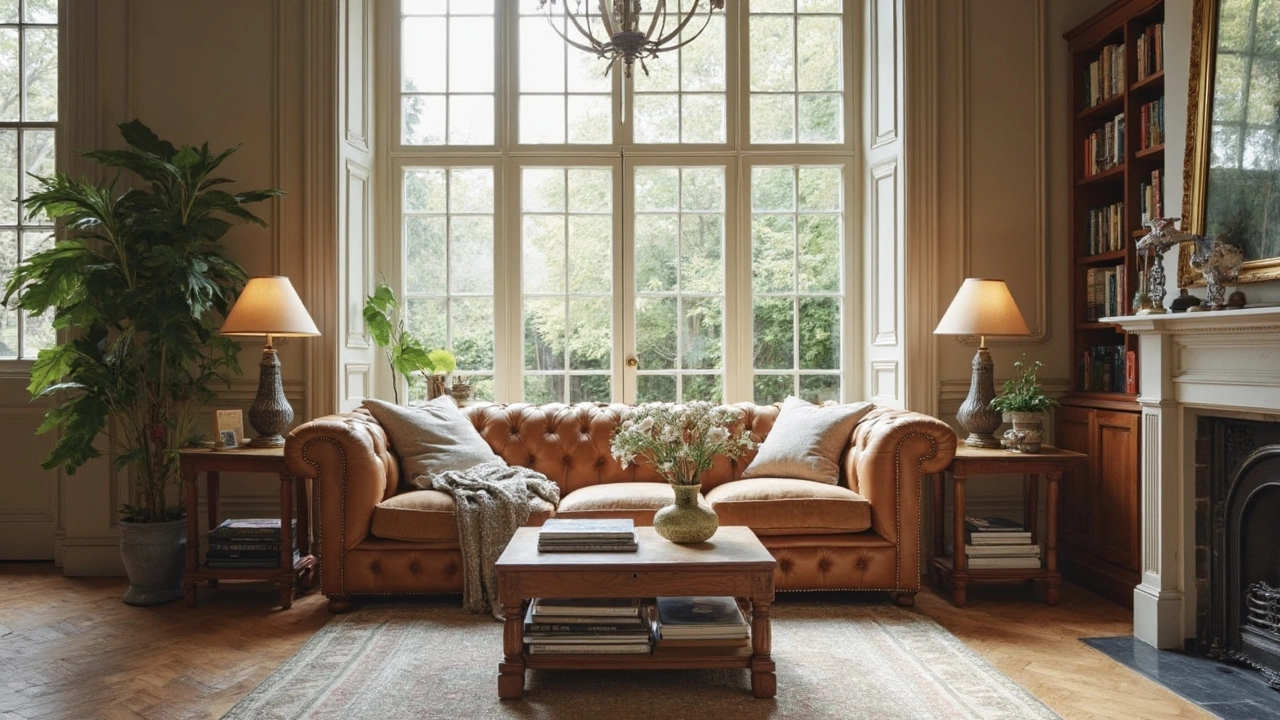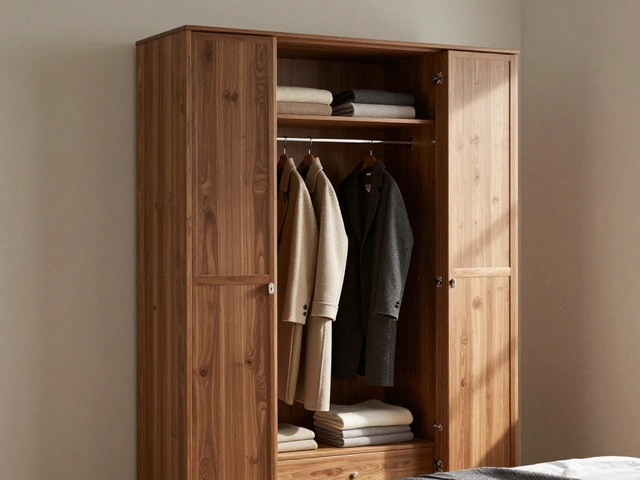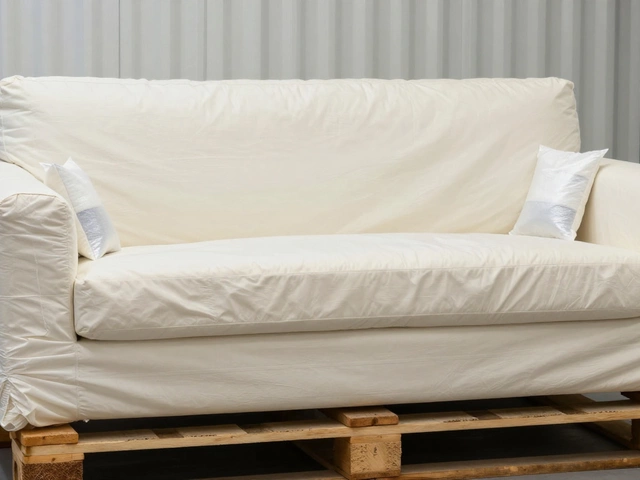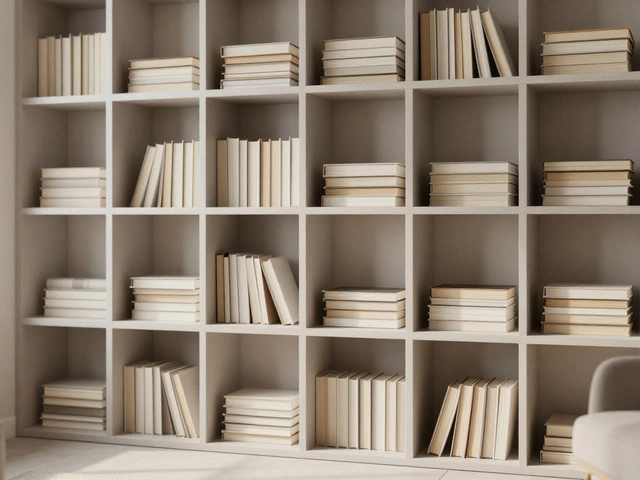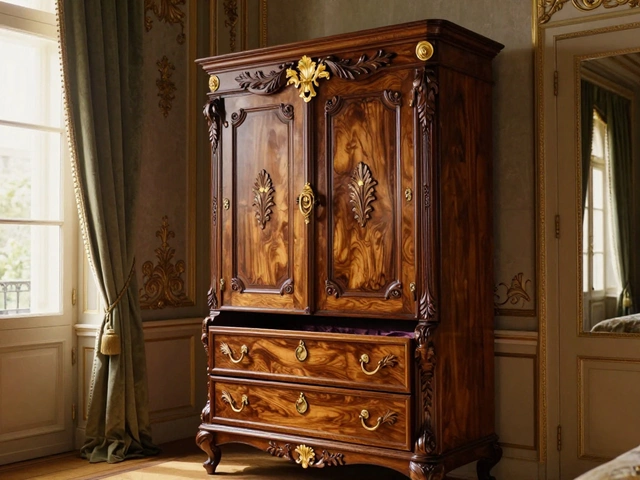Ever walked into a living room and wondered why something just feels off? Way more often than you’d think, it comes down to the coffee table being the wrong size for the couch. If your coffee table hogs space or disappears into the background, it throws off the whole vibe. The right coffee table does way more than hold snacks and remotes—it actually makes your couch look better and your living room feel way comfier.
It’s not just about taste, either. There’s a sweet spot for coffee table size, and nailing it makes your living area flow. Way too many folks get stuck in showrooms or online listings, forgetting that even an amazing table will look awkward if it swamps the sofa or leaves too much empty rug. Getting this right saves you headaches and money. So, how do you find that magic size? There are some numbers and simple tricks. Stick around—you’ll be measuring like a pro in no time.
- Why Coffee Table Size Really Matters
- The Magic Ratios: Ideal Table-to-Couch Proportions
- Standard Coffee Table Sizes and Measurements
- Room Shape, Couch Types, and How They Change the Rules
- Choosing Height, Not Just Length
- Smart Tips for Shopping and Measuring at Home
Why Coffee Table Size Really Matters
Pick the wrong size coffee table, and you’ll feel it in daily life. A table that’s too small becomes useless beyond holding a coaster and the odd mug. Go too big? Suddenly you’re dodging corners every time you cross the room. Coffee table size is a game-changer for living room comfort and looks, way more than people expect.
Think about it—your couch is where people plop down to relax, so all eyes end up facing the table. Too high, and it blocks your view (try watching a movie over an awkwardly tall table—no fun). Too low, and you’re stretching every time someone asks you to pass the snacks. The table should be close enough for everyone to reach, but far enough that nobody’s banging their knees. Experts say the sweet spot is around 16-18 inches from the couch, which is just enough room to squeeze by, but not awkwardly far for dropping off a plate or grabbing the remote.
Now, there’s a bit of psychology here too. If your living room looks unbalanced—say the coffee table dwarfs the couch—your brain picks up on that. People actually sit less comfortably and are less likely to hang out in a room that feels crowded or weirdly empty. So it’s not just about furniture, but making your space feel welcoming.
Just look at the numbers from a 2024 survey Serena and I read: 72% of people said the main spot for putting things in their living room is the coffee table, but over half weren’t happy with the size once they set it up at home. It’s a super common mistake—because without some guidelines, most folks just eyeball it and hope for the best.
Here’s a quick breakdown on why table size matters:
- Functionality: You want a spot for drinks, remotes, even board games without everyone fighting for space.
- Aesthetics: The right-size table balances out your couch, making your whole room look thought-out.
- Flow: People need to walk around easily, so the table shouldn’t be a tripping hazard.
- Comfort: Sitting by a table that’s too tall or too short just feels awkward, and nobody lingers in a space like that.
Sorting out your coffee table size is a fix you only have to get right once. After all, getting the perfect size works wonders without needing a huge budget or fancy redesign.
The Magic Ratios: Ideal Table-to-Couch Proportions
When it comes to coffee table size, you don’t want to guess. There’s a golden rule the pros use: your coffee table should be about two-thirds the length of your couch. So if your couch is 90 inches long, look for a coffee table that’s around 60 inches. This just feels right—it leaves space on either side of the table so things don’t get cramped, but fills the area for a balanced look.
Here’s a quick breakdown to show the idea in action:
| Couch Length | Ideal Table Length |
|---|---|
| 72" | 48" |
| 84" | 56" |
| 96" | 64" |
The width (depth) of the coffee table usually works well when it’s about half the depth of your couch. And don’t forget about walkways—you’ll want around 16 to 18 inches of space between the edge of the couch and the table so people can move around without bumping knees.
Interior designer Rachel Konior puts it simply:
“Keep the coffee table roughly two-thirds the length of your sofa. This keeps proportions looking natural and helps with traffic flow.”
If you have a sectional, measure the longest side for this ratio. For really deep or overstuffed couches, you might want a table that’s a bit larger or chunkier, but always keep movement in mind. No one wants to hurdle the table just to sit down!
- Go for a table that’s two-thirds your couch's length.
- Leave 16-18 inches from the sofa’s edge to the table.
- Make the table about half as deep as your couch, so there’s space to walk and stretch your legs.
These magic ratios aren’t fancy math—they just work. They make any living room look put together without any awkward gaps or tight squeezes. When you stick to these numbers, your living room feels more inviting and useful right away.
Standard Coffee Table Sizes and Measurements
If you’re shopping for a new coffee table size, it helps to know what’s actually standard—not just what looks nice in a magazine. Most coffee tables found in stores run between 40 to 50 inches long and 20 to 30 inches wide. The sweet spot for height is 16 to 18 inches, although some go up to 20 inches if your couch sits a bit higher than average.
Here’s a quick breakdown of typical measurements you’ll run into:
- Length: 40" to 50" is most common, but if you’ve got a big sectional or long sofa, you’ll sometimes see tables up to 60".
- Width (Depth): 20" to 30" works for most standard living rooms. If you’re in a tight city apartment, tables as slim as 18" wide are out there.
- Height: Aim for your table to be roughly even with your couch seat, or up to 2 inches lower. The average seat height for couches is about 17" to 18", so that’s your target zone.
Want the easy answer? The usual rule says your coffee table should be about two-thirds the length of your couch. For a classic 84-inch sofa, that means a table around 56 inches long fits right in. Aim for about 18 inches of space between the edge of your table and your sofa—enough to stretch your legs, but close enough to grab your coffee without a stretch.
Just so you can compare, check out some typical measurements you might see online or in-store:
| Type | Length (inches) | Width (inches) | Height (inches) |
|---|---|---|---|
| Small | 30-36 | 18-24 | 16-17 |
| Medium | 40-48 | 20-30 | 17-18 |
| Large | 50-60 | 24-30 | 18-20 |
If your living room has some quirky angles or your couch is an L-shape, you may need to play with these numbers a bit. But for most people, sticking close to these measurements will make your furniture layout feel balanced and easy to use. If you’re not sure, grab a measuring tape and some painter’s tape—mock out your chosen table’s footprint right on the floor. You’ll get a real sense of how it fits your couch and room layout before you commit.
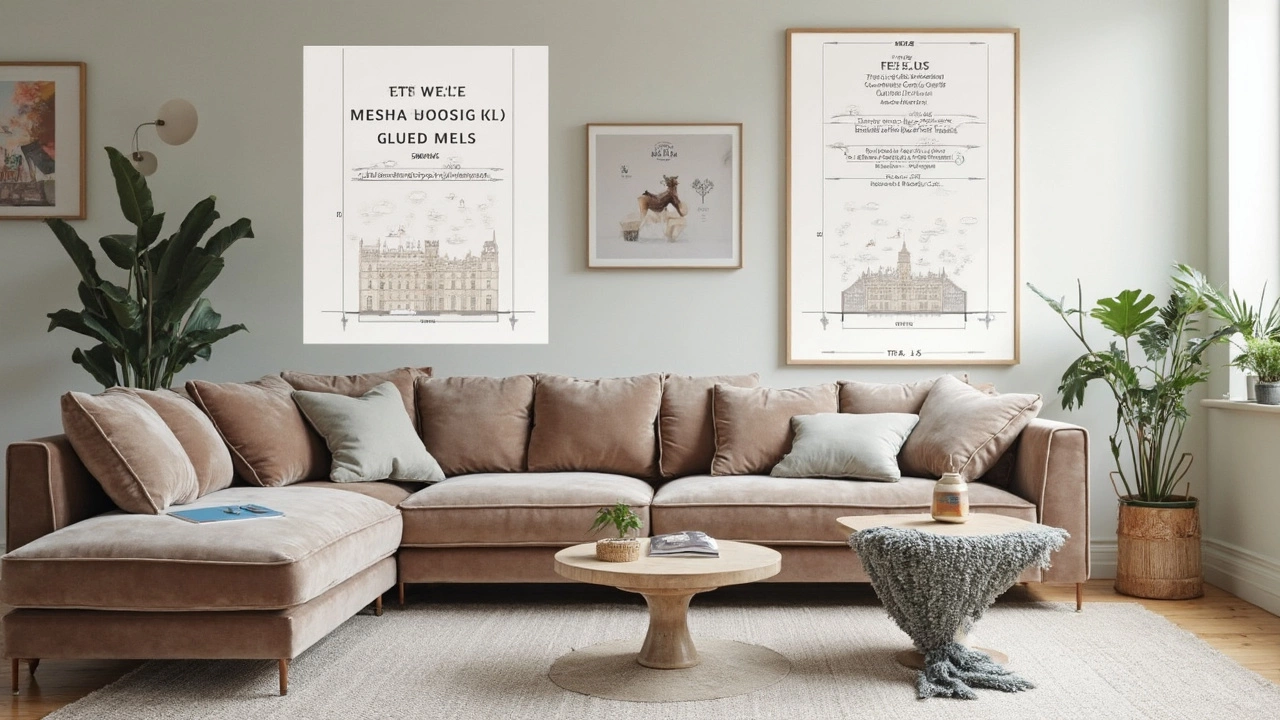
Room Shape, Couch Types, and How They Change the Rules
Here’s where it gets interesting. The shape of your room and the style of your couch can totally change what the “right” coffee table size looks like. It’s not always a one-size-fits-all deal. Those proportional rules you read about earlier are a good jumping-off point, but sometimes you’ve got to break them to make your space work.
If your living room is long and narrow—like what you see in a lot of condos—a big, chunky table makes it feel even more cramped. Go for a slimmer, rectangular table. It stretches with the room instead of fighting it. But got a big, open living area? You can actually lean into a larger, round or square table without making things feel closed off. Here’s a quick look at how different layouts line up:
| Room Shape | Recommended Table Shape | Why It Works |
|---|---|---|
| Long & Narrow | Rectangle or oval | Slim shapes don't crowd walkways |
| Square | Square or round | Balances the room, leaves even space |
| Open concept | Larger, creative shapes | Fills space, anchors your couch |
Your couch style also changes the rules. If you have a massive L-shaped sectional, one tiny table in the middle is going to look lost and won’t be practical for anyone sitting in the "arm" parts. In that case, you might want a bigger, square table—or even two smaller tables you can move around. On the other hand, a simple loveseat or a straight three-seater couch works perfectly with a traditional rectangular table, around half to two-thirds the length of the seating.
Here’s a tip from my own living room: when Serena and I upgraded to a sectional, our old coffee table felt like a toy. We switched to a 36-inch square table, and suddenly the whole room looked coordinated. Sometimes, playing with size and shape is the only way to get it right.
Corner couches, daybeds, and modular seating all push you to think outside those basic size rules. Consider space for people to walk around, access drinks, or stretch their legs—not just what looks good on paper. If you have curious pets or kids, it’s smart to avoid sharp corners and maybe go round.
- Measure how much space you need to let people walk between your table and couch—ideally, leave about 16-18 inches.
- For tricky layouts, consider nesting tables or an ottoman that doubles as a coffee table.
- Pay attention to your room’s traffic patterns. If your path from the kitchen to the couch goes right by the table, that shape and size matter more than you’d think.
No matter the room or couch, always check if it works for how you actually want to live. If folks end up bumping their shins every time they walk by, the wrong coffee table size can get real annoying, real fast.
Choosing Height, Not Just Length
Everyone focuses on the length of a coffee table in relation to their couch, but height is the detail that makes sitting around the table feel good (or awkward). Get it wrong, and you’re forever bending over or reaching up for your drinks. The sweet spot? Aim for a table that’s the same height as your couch seat, or just a bit lower—never higher.
Most couches have a seat height between 16 and 18 inches. That means your coffee table should usually land at 16 to 18 inches tall, too. If you go taller than your couch seat, the table isn’t as comfy for reaching stuff, and it looks a bit off. Go way shorter, and now you’ve got an oddly low table that messes with the room’s proportions.
Here’s a quick way to make sure you’re not guessing:
- Measure from the floor to the top of your couch seat cushion at its thickest point.
- That number is your target coffee table height. You can go up to about one inch below, for a modern look—but steer clear of anything taller than your seat height.
- If your couch is really plush and sinks, sit down first and measure where your knees are. That’s real life height—not showroom height!
For most living rooms, sticking within two inches of the seat height keeps things comfortable and balanced. If you’re thinking about getting a taller table with storage or drawers, double-check how it’ll work with the flow of your room and how you use the space. Nobody wants to bang their knees or keep bumping into corners.
Here’s a little visual help with standard measurements:
| Furniture | Common Height |
|---|---|
| Couch seat | 16–18" |
| Coffee table | 16–18" |
The right coffee table size isn’t just about matching—it’s about making your living room easy to live in. Remember this: if you can set down your mug without stretching or stooping, you picked well.
Smart Tips for Shopping and Measuring at Home
You don’t need fancy tools to make sure your future coffee table size actually fits your couch and looks good in your living room. Most people just eyeball it and end up sliding the table back and forth for months. Save yourself the hassle by prepping with a few easy moves before buying anything.
- Grab the Tape Measure. Measure the length and depth of your couch, then the spot where the coffee table will go. Jot them down or snap a photo—having the real numbers in your phone helps at the store.
- Use Painter’s Tape or Cardboard. Lay out the exact size of a potential coffee table on your floor with blue tape or cut up a cardboard box to match different table sizes. Walk around it. Sit on the couch. Can you move easily?
- Follow the 2/3 Rule. Your coffee table should be roughly two-thirds the length of your couch. So if your couch is 90 inches long, aim for a 60-inch table.
- Mind the Gaps. Leave 14 to 18 inches between your couch and table. This distance is comfy for reaching snacks but won’t block foot traffic. Squeeze it closer and your shins will pay the price; push it farther and you’re stretching every time you want the remote.
- Check the Height. Coffee tables should usually be the same height as the top of your couch seat or 1-2 inches lower. Anything higher just feels weird.
When you shop, don’t let the store lighting or displays trick your eye. Rooms in showrooms are always bigger than your living room. Double-check the size specs listed and compare with your measurements.
| Common Couch Size | Recommended Coffee Table Length |
|---|---|
| 72" (Loveseat) | 48" |
| 84" (Standard Sofa) | 56" |
| 96" (Large Sectional) | 64" |
Another tip—don’t forget about the shape of the room. If your living room is narrow, look for slimmer tables. If you have a sectional, go with round or oval tables for smoother traffic flow. Some online sites offer a virtual “see it in your room” feature. Drop in your numbers and check how different tables look with your actual sofa—super helpful, especially if you feel stuck between two sizes.
And if you’re like me and tend to second-guess, take a photo of your taped-out mockup and send it to a friend for a second opinion. Sometimes a fresh set of eyes saves you from buying a table that’s all wrong for your space.

